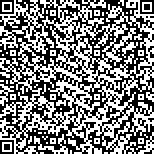张路,丛卉,刘淑芬,袁望舒,陈丽霞.肺功能正常的46例青少年特发性脊柱侧凸患者心肺运动试验结果分析[J].中华物理医学与康复杂志,2018,40(1):43-47
扫码阅读全文

|
| 肺功能正常的46例青少年特发性脊柱侧凸患者心肺运动试验结果分析 |
| Analysis of cardiopulmonary exercise testing results of 46 adolescent idiopathic scoliosis patients without pulmonary dysfunction |
| |
| DOI: |
| 中文关键词: 青少年特发性脊柱侧凸 心肺运动试验 体重指数 |
| 英文关键词: Adolescent idiopathic scoliosis Cardiopulmonary exercise testing Body mass index |
| 基金项目: |
|
| 摘要点击次数: 5790 |
| 全文下载次数: 6989 |
| 中文摘要: |
| 目的 分析肺功能正常的青少年特发性脊柱侧凸(AIS)患者心肺运动试验(CPET)结果,并探讨运动耐力的相关影响因素。 方法 回顾性分析2016年6月至2017年3月本院收治的临床资料完整、肺功能正常的AIS患者术前CPET结果,分析侧凸部位、侧凸程度对CPET结果的影响,并探讨肺功能、体重指数(BMI)、年龄与运动耐力的相关性。 结果 共纳入病例46例,其中单胸弯组17例,单胸腰弯组11例,胸弯+胸腰弯组18例。①46例患者中10例(21.74%)患者运动耐力正常,轻、中、重度运动耐力减退者分别有24例(52.17%)、11例(23.92%)、1例(2.17%)。②单胸弯组峰值每分钟通气量(peak VE)为[(43.11±8.47)L/min],显著低于单胸腰弯组的[(50.81±10.11)L/min],差异有统计学意义(P<0.05)。胸弯+胸腰弯组无氧阈值公斤摄氧量(VO2AT/kg)显著低于单胸弯组和单胸腰弯组,差异均有统计学意义(P<0.05)。③单胸弯患者中,中度侧凸7例(中度胸弯组)、重度侧凸10例(重度胸弯组),2组CPET相关指标组间比较,差异均无统计学意义(P>0.05)。④peakVO2%pred与肺功能各指标、年龄均无相关性(P均>0.05),与BMI呈负相关(r=-0.326,P=0.027)。 结论 肺功能正常的AIS患者普遍存在运动耐力下降;胸弯同胸腰弯患者相较,peak VE下降;胸弯+胸腰弯者同单胸弯、单胸腰弯者相较,VO2AT/kg下降;运动耐力同侧凸程度、肺功能、年龄无关,而与BMI相关。 |
| 英文摘要: |
| Objective To explore the cardiopulmonary function and exercise capacity of adolescent idiopathic scoliosis (AIS) patients without pulmonary dysfunction. Methods In this retrospective study, the results of exercise tests administered to AIS patients without pulmonary dysfunction were reviewed seeking any consistent relationship between scoliosis location and severity and the test results. Correlations relating pulmonary function, body mass index (BMI), age and exercises tolerance were also sought. Results Forty-six patients were included, 17 with solely thoracic scoliosis, 11 with solely thoracolumbar scoliosis and 18 with both thoracic and thoracolumbar scoliosis. Ten of those studied (21.74%) had normal exercise tolerance, while in 24 exercise tolerance was mildly impaired, in 11 moderately and in 1 severely. The average peak minute ventilation (MV) of the thoracic scoliosis group [(43.11±8.47) L/min] was significantly lower than that of the thoracolumbar scoliosis group [(50.81±10.11) L/min]. The average VO2AT/kg of the thoracic+thoracolumbar scoliosis group [(14.16±2.04) ml/kg/min] was significantly lower than that of the thoracic scoliosis group [(16.82±2.87) ml/kg/min] and of the thoracolumbar scoliosis group [(17.78±4.34) ml/kg/min]. Among the thoracic scoliosis patients, no significant difference in exercise tolerance was observed between those with moderate and severe scoliosis. The peak VO2% pred was negatively correlated with BMI, but not significantly correlated with pulmonary function or age. Conclusions Although without pulmonary dysfunction, the AIS patients showed a significantly lower tolerance for maximum exercise generally. The average peak ME was significantly lower in the thoracic scoliosis group than in the thoracolumbar scoliosis group, while the average VO2AT/kg was significantly lower in the thoracic + thoracolumbar scoliosis group than in the solely thoracic and thoracolumbar scoliosis groups. Exercise tolerance was negatively correlated with BMI, but uncorrelated with the severity of the scoliosis, pulmonary function or age. |
|
查看全文
查看/发表评论 下载PDF阅读器 |
| 关闭 |